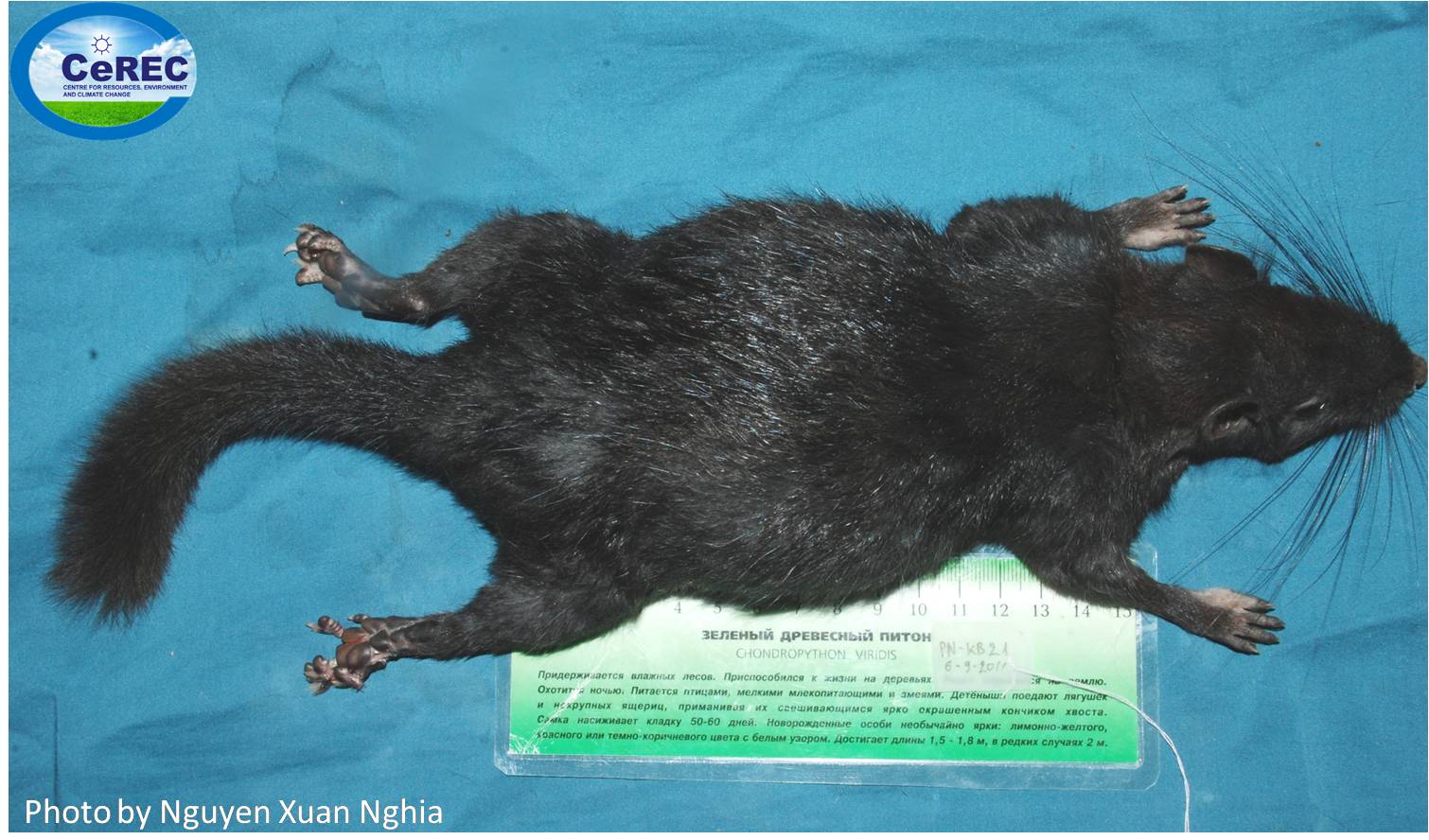Discovery of living 'Fossil' mammal species in Phong Nha - Ke Bang National Park, Vietnam
![]()
In August 2011, a group of Vietnamese scientists inluding 2 CeREC scientists (Ass. Prof. Dr. Nguyen Xuan Dang and Mr. Nguyen Xuan Nghia), Dr. Nguyen Manh Ha from National University of Hanoi and Mr. Nguyen Duy Luong from Fauna & Flora International) conducted small mammal survey in expanded area of the Phong Nha - Ke Bang National Park, belonging to Thuong Hoa Commune, Minh Hoa District, Quang Binh Province. During this survey we could collect 4 specimens of unknown mammal taxon (local ethnic people call them as kne-coung). Based on their external morphological features, we temporarily considered them as Laotian Rock Rat (Laonestes aenigmamus) and gave it Vietnamese name as "Truong Son Rock Rat".

Photo 1: Specimens of Laotian Rock Rat Laonestes sp. found in Phong Nha - Ke Bang National Park, Quang Binh Province, Vietnam
Laotian rock rat (Laonestes aenigmamus) was first described in 2005 and representing as the only living representative of an ancient fossil family Diatomyidae, that was thought to have been extinct for 11 million years, since the late Miocene (Jenkins et al., 2005; Dawson et al. 2006). Laotian Rock Rat has small body size (Head-body length: 25-30cm, body weight: 300-400g), rat-like head and squirrel-like tail. They conduct nocturnal pattern of activities, living hidden within thick vegetation of ground forest layer and in daytime hidden in underground dens in the foot of kast towers. Laotian rock rat is now enlisted in IUCN Red List at "Endangered" (EN) as the species is found only in few localities of Khammouane Province, Lao PDR and severely threatened by hunting/snaring practice of local communities and habitat loss/ degradation.
The discovery of Laotian Rock Rat in Phong Nha - Ke Bang National Park is of significance as it, among others, increases biodiversity values of the National Park in the world as well as promotes opportunities of conservation for this mystery mammal. Moreover, our preliminary DNA sequence analysis of the Phong Nha - Ke Bang specimens showed that the specimens might be the second surviving species of Diatomyidae. If that is a case, this study is more valuable and the conservation of this species in Phong Nha - Ke Bang becomes more crucial. The range of the species distribution areas has not yet identified; meanwhile, this species is facing a plenty of threats and pressures from hunting for food, affecting their habitats and declining their population and from other unidentified reasons. CeREC is now seeking fund for final taxonomic clarification of Phong Nha - Ke Bang specimens as well as for study of the species ecological requirement that are utmost important for the species conservation.

Photo 2. Habitat of Laotian Rock Rat in Phong Nha - Ke Bang
Search
Main menu
- CeREC News - Bản tin CeREC
- Conservation Programs - Các chương trình bảo tồn
- Biodiversity Projects - Các dự án Đa dạng sinh học
- Environmental Projects - Các dự án Môi trường
- Training & Education - Đào tạo và Tập huấn
- Flagship Species - Loài trọng tâm của CeREC
- New Species- Loài mới phát hiện
- Law Enforcement - Thực thi pháp luật
- Publications - Các tài liệu xuất bản
- Technical Reports - Các báo cáo kỹ thuật
- Training Documents - Tài liệu đào tạo và Tập huấn
- Photo Reports - Phóng sự ảnh
- Nature Tours - Tham quan dã ngoại
- Partners & Donors - Đối tác và Nhà tài trợ
Recent Posts
Partners & Donors
CeREC thanks the following organizations for their generous support and sponsorship:





.jpg)


.jpg)

.jpg)


.jpg)
.jpg)
.jpg)




